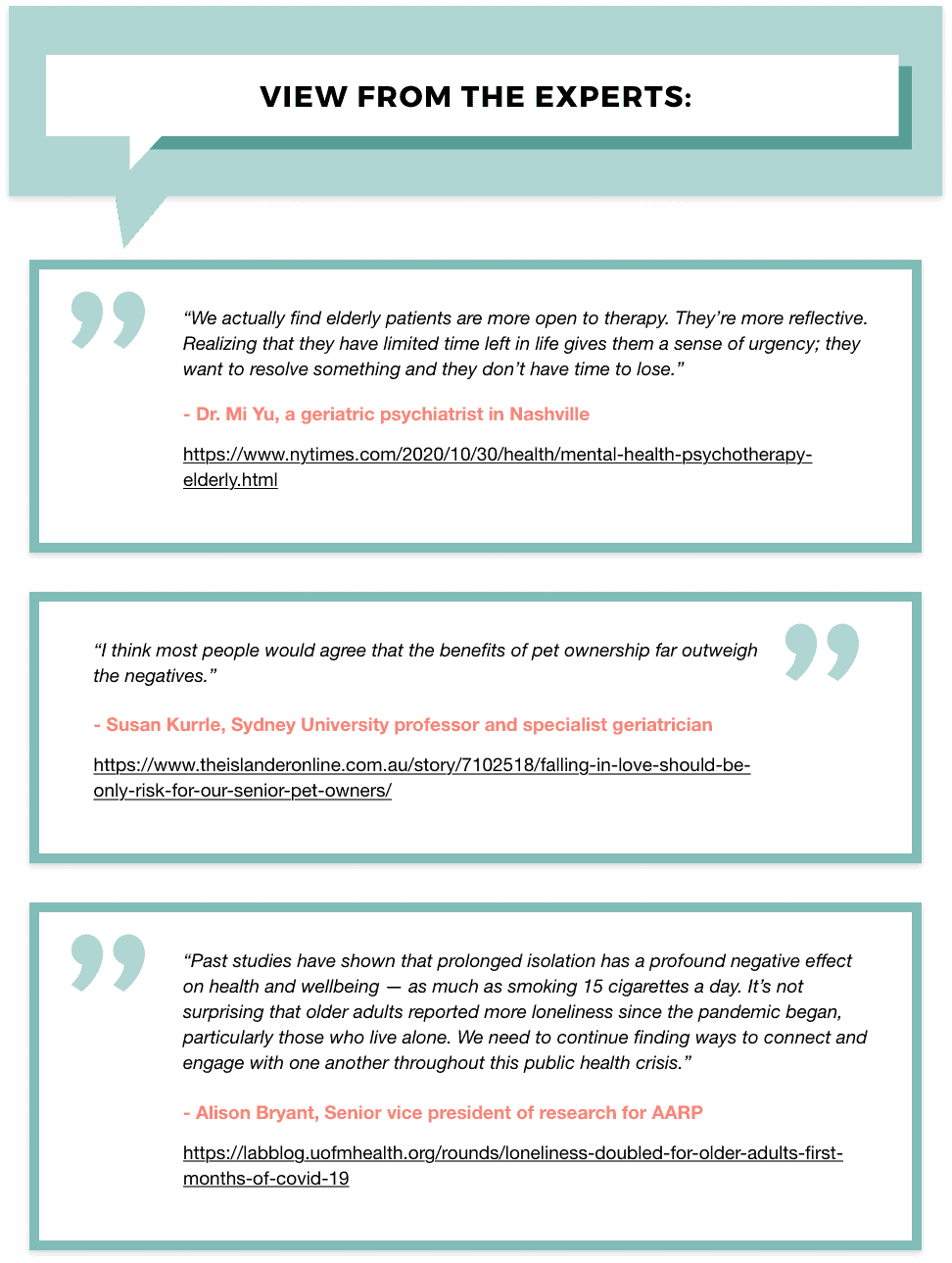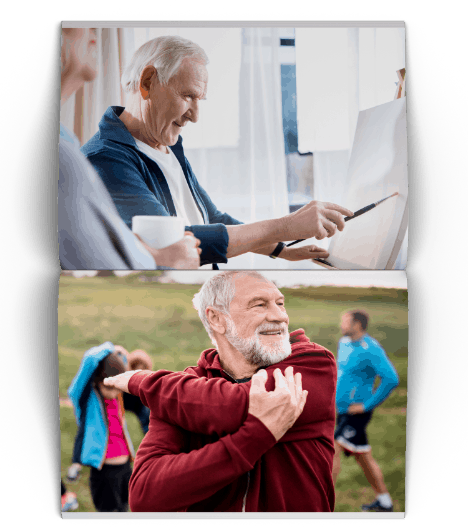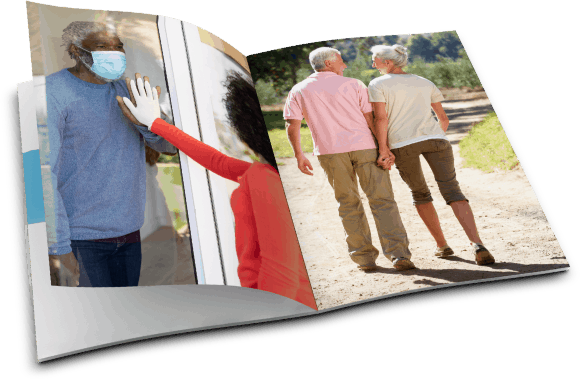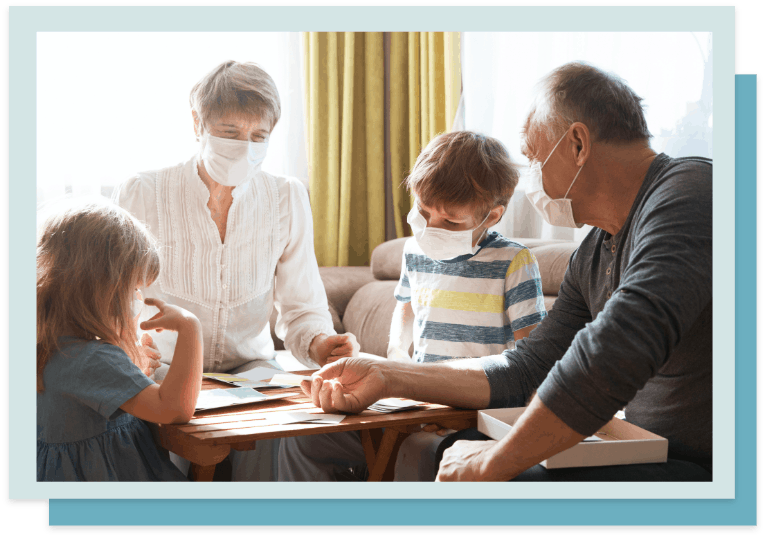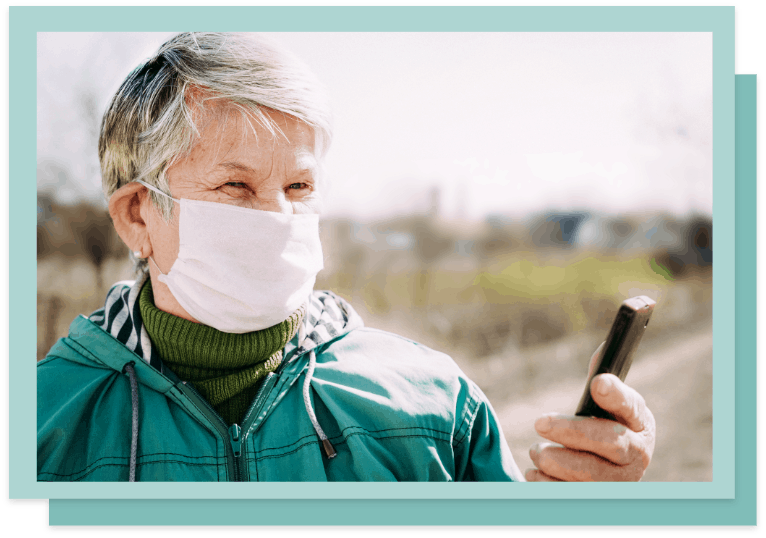Activities for Seniors Facing Loneliness Including Virtual and In-Person Activities
Seniors and Loneliness: What You Should Know
- During the COVID-19 pandemic, a majority of seniors experienced higher levels of loneliness.
- Structured activities, such as volunteering, sports, and group hobbies, can be a productive way to prevent such loneliness.
- Social isolation among seniors has a direct correlation with depression, anxiety, and even dementia.
Activities such as volunteering at an animal shelter and singing in the choir help us stay connected and give us a sense of purpose. Unfortunately, the pandemic restricted our contact with friends and loved ones.
Seniors were hit especially hard since they are a high-risk group. Everyone had to get creative with technology, physical distancing, and other measures. Still, loneliness and social isolation were inevitable.
This guide looks at virtual and in-person activities for seniors facing loneliness. Many of the in-person activities are for safer times coming soon, although some can be adjusted to incorporate physical distancing and masking.
Important: If you need help now, call the Friendship Line. It is accredited and offers 24/7 support services, including suicide intervention. However, you don’t have to be in crisis to call. The Friendship Line is also a warmline with staffers offering a listening ear. They can provide information and referrals for seniors who are isolated. The toll-free number is 800-971-0016.
Table of Contents
- View from the Experts
- Activities for Seniors Facing Loneliness
- Tips for Identifying Obstacles and Solutions
- For Caregivers and Family Members: Activities for Your Senior Loved Ones
- References and Footnotes
- Additional Resources
Activities for Seniors Facing Loneliness
This guide is more than a list of activities, although we have a list too (a few paragraphs down). We want to emphasize the importance of exploring the causes behind your loneliness.
Loneliness is rarely as simple as something like, “Well, I can’t go anywhere since I might have a bathroom accident.” Fear holds a lot of people back. They may have a hard time discussing incontinence issues (or hearing, vision, what have you issues) with their loved ones and medical professionals. It’s tough to feel vulnerable and like you need to ask for help.
Logistical issues such as a lack of transportation can be more difficult to surmount, but solutions might be possible. We get into that near the end of the guide.
COVID-19 certainly has been a whopper of a logistical issue. It has put a temporary stop to many in-person activities. Some have gone virtual but are not the same. Still, a physically distanced walk when you used to walk close together is better than nothing. And, for some seniors, virtual activities are a step up. Maybe they’re homebound or just not comfortable leaving the house for long periods. Online activities that did not exist before are an excellent opportunity for them to socialize and feel less lonely.
Some Activities for Seniors Facing Loneliness
- Volunteering
- Writing memoirs
- Staffing a crisis hotline
- Counseling or therapy
- Phone calls
- Facetime/video chats
- Online games
- Doctor visits
- Online classes or self-education
- Reading
- Social media
- Socially distanced walking, birdwatching, or biking
- Drawing
- Journaling or blogging
- Exercise classes
- Reading groups or book clubs
- Tinkering
- Dropping in at the local senior center
- Taking in a renter or listing a room on Airbnb
- Getting a pet
- Calling a warmline to talk with someone
Adjust an Activity to Physically Distance
“Social distancing” is a bit misleading because the true focus should be on physical distancing. Continue to go for walks, still exercise or bird watch with your friends, and keep up these chats. However, do them outside and stay at least six feet apart (the farther apart the better). To be extra safe, wear masks.1
These safeguards are not “normal” life, but this type of in-person contact goes a long way to stave off loneliness. If you don’t feel comfortable doing these types of in-person activities regularly, consider small intervals. A five-minute chat with a neighbor when you are both outside can be enough to let you feel connected.
Drop in at the Local Senior Center (Virtually or In Person)
Senior centers, also called adult activity centers, are where many seniors go to socialize, take exercise classes, and learn new things. Give the ones in your area a call, or look them up online. You may be eligible to participate starting at age 50.
Many senior centers have stayed open to offer socially distanced walks, virtual activities, and information during the pandemic. Virtual and in-person activity examples include rock painting, writers’ workshops, exercise classes, games, and cooking classes. Many virtual activities are recorded, so you can follow along on your schedule.
Your adult activity center may ask that you pay a yearly fee, something like $35. On top of that, meals, trips, and a few higher-end activities commonly have their own charges. Still, you can pack in a huge amount of socialization for a low yearly price.
Volunteer
Volunteering gives people a sense of purpose. It doesn’t have to be in-person, although many volunteer jobs are. The pandemic highlighted the need for virtual and long-distance opportunities such as staffing a crisis hotline, reading books to children,tutoring, transcription, and even contributing to Smithsonian Wikipedia pages.
Big-name programs tend to be full already due to pandemic overflows, so some extra effort is necessary. Say you have a passion for trains. Contact museums and organizations, starting locally, and you are bound to find a group that could use your expertise. For other ideas and opportunities, check out VolunteerMatch.
As for in-person volunteering, it might be possible to tailor experiences to match your risk and comfort levels. For instance, some seniors continued to volunteer with Meals on Wheels during COVID-19. They wore masks for meal pickups and stayed six feet away from all personnel. Deliveries took a no-touch approach, with volunteers leaving the food and interacting with recipients through windows.2
Post-pandemic, lots of safe volunteer opportunities will be available again. Popular ones include working at an animal shelter, collecting food, cleaning up parks, fundraising, tutoring, and mentoring.
Exchange Letters with Pen Pals
Letters offer a personal, human touch that emails and texts do not. That’s a big reason pen pal programs have flourished during COVID-19. These programs are especially popular at assisted living centers and other residential facilities. Of course, seniors don’t have to live at one to benefit. Some ideas for finding pen pals:
- Write to friends and loved ones
- Ask relatives to find pen pals for you
- Contact schools, hospitals, and other places
- Write to soldiers or people in assisted living
Have just one pen pal or correspond with nine people, whatever you like!
Pen Your Memoirs or Autobiography
People have stories to tell. That’s true even if you believe your life has been dull, perfectly ordinary, something no one would want to hear about. Odds are that your loved ones care. At the very least, local historical societies love first-person accounts that give a personal touch to history.
Now is an excellent time to write about the long days you worked on the family farm as a child or about your first experience driving a car in 1940. Anything goes! Handwrite, type, or narrate only one paragraph or a mini-novel every day—the choice is yours. If you need help getting started, this blog post from the Institute on Aging has eight prompts.
Join a Gym or Club
Gyms and fitness clubs serve obvious functions: They facilitate exercise and physical rehabilitation. What may be less obvious: They’re great for socialization, too.
Gyms are where many seniors read the newspaper, drink coffee, chat with friends, and make new ones. Some clubs have drink or snack areas with tables and chairs.
Many seniors qualify for discounts on gym memberships. Alternatively, a SilverSneakers membership gives you access to participating gyms and fitness clubs.3 SilverSneakers is a free fitness program included with many Medicare Advantage plans and a few Medicare supplement plans.
To find age-friendly gyms and clubs, check out the Facility Locator from the International Council on Active Aging.
Sing in Choirs, Dance, Take Pottery or Painting Classes or Join Other Activities
These activities aren’t pandemic-friendly but should make a triumphant return when life gets safer. If you enjoy tinkering or repairing, a repair cafe might be right up your alley. Many localities have them.
In the meantime, senior centers and other organizations are hosting classes and events through Zoom, Facebook Live, and other platforms. For other recorded options, check out YouTube. You can take the self-taught route or grab a buddy (virtually or in-person) to do these activities with you.
Get a Pet
Pets can bust loneliness in multiple ways but do come with some drawbacks. Fortunately, programs such as Pets for Seniors aim to minimize these risks. Let’s look at common pros and cons.
| Pros | Cons |
|---|---|
| Companionship that reduces loneliness | Tripping and falling risks (can mitigate through investing in training, hiring dog walkers, knowing the pet’s habits, etc.) |
| Built-in socialization opportunities (greeting people while walking the dog or getting the pet groomed, receiving comments on Facebook after posting cat pictures, etc.) | Death of pet could make the senior lonelier and trigger depression |
| Built-in exercise with some pets | Financial expenses (buying the pet, providing ongoing medical care, paying for dog walkers, paying for pet gear that does not require the senior to bend, etc.) |
| Plan Bs, succession plans, planning ahead, and even having a co-owner can alleviate many of the cons | Possibility of having to give up the pet due to senior’s health or financial issues |
| Cats can make great pets for seniors who are largely immobile. Older cats and dogs may be good choices, too | Seniors may go without their own food and necessities to provide for the pet (reach out to your vet if this is the case. The office can connect you to pet assistance resources) |
| Dogs add to home security, scaring off intruders | 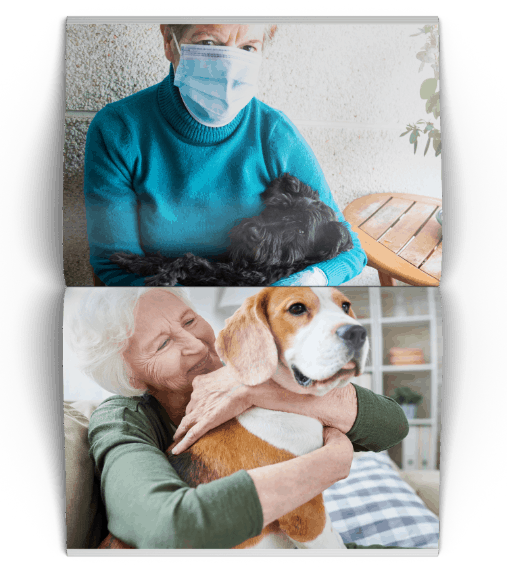 |
| Can add a sense of connection and soothing to seniors with Alzheimer’s. Pets can even improve appetite |
You know your situation best. For instance, a pet could be a great idea if you live within walking distance of grandchildren who would be happy to come over every day to exercise the pet, feed it, or clean the litter. This sort of scenario is a double win, as it gives both you and your grandchildren socialization time with one another. However, it could backfire if you get a pet is that too excitable and poses too much of a tripping hazard.
Get a Service Dog
If a pet isn’t workable and you have disabilities, one alternative is a service dog. Service dogs can perform tasks such as opening cabinets, helping wheelchair users sit straight, and helping people get dressed. Service dogs make more outings possible, which, in turn, could reduce loneliness. The dogs can even grab medications in emergencies and call 911.
Although service dogs are not pets, they provide companionship. However, they can be expensive, and the wait time can be 12 to 24 months long.4 Seniors may also need to travel somewhere to participate in training their dog.
Home companion dogs, also called companion dogs, are a middle ground between regular pets and service dogs. There may be a program (or several!) near you.
Link Up with a Friendly Voice
Earlier, we touched on the Friendship Line, which functions as a 24/7 hotline and warmline. It is the sole accredited crisis line in the United States for people 60 and older, and for people with disabilities.
If you want someone to talk to, a similar alternative is AARP Friendly Voice. Call 1-888-281-0145, and you get a call back (the caller ID says 800 Service). Spanish speakers should call 1-888-497-4108. Service hours for English and Spanish are from 9 a.m. to 5 p.m. local time.
For more immediate needs, AARP has this list of helplines. If you are facing loneliness due to mental or substance issues, you may prefer to call the Substance Abuse and Mental Health Services Administration helpline.
Go to Counseling or Therapy
You might have lifelong issues that you’re ready to resolve, or you want to get to the root causes of your loneliness. Whatever the case, collaborating with a counselor or therapist can do wonders. Plus, telehealth sessions have become much more common during COVID-19. In that sense, therapy is even more accessible now to seniors who are homebound or who have mobility difficulties.
Unfortunately, paying for therapy is not always easy. On the plus side, traditional Medicare sets no limits on how many individual and group therapy sessions you can have. You still do 20 percent co-pays, though, and Medicare generally does not cover family therapists or professional counselors. It does cover therapy and treatment by doctors, clinical psychologists, and clinical social workers. It can also be hard to find professionals who accept Medicare and older patients.5
Counseling or therapy is not always easy to arrange and pay for, but it can reduce loneliness immensely.
Visit the Doctor
We’re serious: Visiting the doctor counts as an activity and serves multiple purposes. First, it gets seniors out of the house (or seeing new faces, if seniors use telehealth). It offers socialization with people such as bus drivers, cab drivers, or relatives driving seniors to the appointment. Then there are receptionists, nurses, and doctors. Plus, you might be able to plan other activities before or after a doctor visit since transportation is lined up.
On a deeper level, visiting the doctor is important for preventative health and finding resources. Seniors can receive insight on issues such as incontinence or hearing loss that make them feel lonely. Even if there is nothing physical behind the loneliness, seniors have the opportunity to discuss their feelings. Now is not the time to suffer in silence. Talk with your doctors. They can help you find support groups, socialization options, and even transportation (or refer you to others who can help).
Join Meetup Groups (or Facebook Groups)
Meetup has many groups that seniors enjoy. You can participate virtually, in person, or both. Be sure to search for your location if in-person proximity is a huge priority.
Similarly, your community is likely to have multiple Facebook groups, some that are senior-focused and some that are activity-focused. Writing, photography, and hiking are common group endeavors. Feel free to start your own group if you can’t find one that appeals.
Contact the Eldercare Locator and Local Area Agency on Aging
Get in touch with the Eldercare Locator to learn about online, social, volunteer, and other area activities to reduce loneliness. You can also get a head’s up on transportation and health services that make it easier to get to activities.
- Chat online
- Call 1-800-677-1116
Meanwhile, your local Area Agency on Aging may be doing online exercise classes, call check-ins, technology classes, and much more (especially during the pandemic).
Take in Renters or Loved Ones Who Need a Place to Live
Maybe you can socialize right at home by bringing in renters or relatives who need somewhere to stay. This approach can be pandemic-friendly if the new residents follow safety measures.
COVID-19 or not, you and new residents must be on the same page regarding leases, expectations, common spaces, rent, caregiving, and other considerations. Becoming a landlord can be a massive headache but may be worth the cons to gain companionship. Take the time to find suitable matches.
One alternative to renting out a room is listing it on Airbnb. Other options include Roommates4Boomers and Silvernest. They help seniors find roommates and house shares.
Loneliness Can Lead to Health Problems
Loneliness comes in many shapes and sizes. For instance, you could be surrounded by people and still feel lonely. Whatever form it takes, loneliness can lead to health problems such as increased risk of depression, anxiety, obesity, smoking, dementia, and stroke.6
Loneliness and Social Isolation Are Not the Same
Social isolation occurs when you are physically separate from other people, while loneliness is a feeling of distress at being separated or by yourself. They do not always go hand in hand. For example, you can be lonely because you recently lost your spouse even though you’re surrounded by other relatives you live with.7
Remember Your Loved Ones
When the death of someone you love is the cause behind your loneliness, time may be the best healer. The same goes for other triggers such as divorce, a health diagnosis, or a new disability.
You may never feel the same again, and that’s normal. Some people throw themselves into activities, while others dial back their social engagement. One thing that often helps is remembering your loved ones—discussing them with others, listening to friends tell stories about them, going through old pictures and making albums, or writing about your experiences with them. Give your feelings space to breathe and come out.
Many seniors face obstacles such as incontinence, hearing loss, or a lack of transportation that prevent them from participating in activities. Sometimes, there is no workaround. Reality is what it is.
At the same time, there could be solutions you haven’t thought of or have been too scared to try. Take incontinence, for example. It can be scary to broach the subject with your doctor. If you can force yourself to share, though, your doctor might be able to prescribe medications and recommend incontinence supplies.
Do a little assessment to figure out the reasons behind your hesitancy. Is it genuinely all you, or does your doctor come off as judgy or dismissive? It may be time to look into switching doctors. Similarly, it can be tough to ask your children to drive you places when you’re incontinent. You may not want to burden them, risk looking weak, or have an accident in front of them. That said, tough conversations are necessary. It would be a shame to let fear hold you back.
A lack of transportation is problematic for obvious reasons. Plus, you might not want to reach out to friends or loved ones for rides, afraid you are burdening them. It’s challenging and frustrating. Many seniors have to trawl through lots of solutions, make way too many calls, deal with fears, and contact various people/agencies before finding something affordable and half-workable. However, the searching around is usually worth it in the long run. You may be able to simplify the process by contacting an area eldercare agency first.
Internet access has been a major logistical issue during the pandemic. Senior Planet has the scoop on different ways to get low-cost access.
For Caregivers and Family Members: Activities for Your Senior Loved Ones
It’s tough to watch the people you love face loneliness. As touched on above, logistical issues such as transportation could be the biggest (or only) obstacle. Offer to help how you can, for example, taking the bus with them the first few times, arranging and paying for cabs, finding drivers, and coming over once a week to drive your loved ones to activities.
People like to feel needed. It gives them a sense of purpose, so look within. Is there anything in your life that your senior loved ones could do or help with? Some ideas:
- An oral history on their life or on specific experiences (can describe the stories behind old photos)
- Making a family tree
- Their expertise on topics such as gardening or recipes/helping you plant seeds or cook some meals
- Party planning
- Weekly card or game sessions with the kids
- Reading stories to the kids (can be in person, via phone, or through video chat)
These ideas work best when you identify a genuine gap or need. For example, suppose you’re not a great cook but want to improve and have always admired your grandfather’s abilities in the kitchen. People, no matter their age, tend to see through empty, “busywork” requests.
Activities for Seniors Facing Loneliness
Activities such as calling a warmline or singing in the choir can help seniors who face loneliness. However, because loneliness is a feeling of distress, you may need time to deal with it adequately. That could be the case if your best friend, sibling, or spouse just died.
Activities are great, but it also helps to understand the causes behind your loneliness. That way, you can address them and participate in activities that do more to reduce your feelings of distress.
References and Footnotes
- Social Distancing. (Updated 2020, Nov. 17). Centers for Disease Control and Prevention. Retrieved Feb. 4, 2021 from https://www.cdc.gov/coronavirus/2019-ncov/prevent-getting-sick/social-distancing.html
- How Meals on Wheels Continues to Feed Our Vulnerable Seniors Amidst the Pandemic. (2020, May 18). Meals on Wheels America. Retrieved Feb. 4, 2021 from https://www.mealsonwheelsamerica.org/learn-more/blog/how-meals-on-wheels-continues-to-feed-our-vulnerable-seniors-amidst-the-pandemic
- Gym Membership for Seniors. (n.d.). SilverSneakers. Retrieved Feb. 4, 2021 from https://www.silversneakers.com/learn/gym-fitness/
- Service Dog. (n.d.). The Ability Center. Retrieved Feb. 4, 2021 from https://www.abilitycenter.org/programs/assistance-dogs/service-dog/
- Span, Paula. (2020, Oct. 30). You’re Not Too Old to Talk to Someone. The New York Times. Retrieved Feb. 4, 2021 from https://www.nytimes.com/2020/10/30/health/mental-health-psychotherapy-elderly.html
- Loneliness and Social Isolation Linked to Serious Health Conditions. (n.d.). Centers for Disease Control and Prevention. Retrieved Feb. 4, 2021.
- Social Isolation, Loneliness in Older People Pose Health Risks. (2019, April 23). National Institute on Aging. Retrieved Feb. 4, 2021 from https://www.nia.nih.gov/news/social-isolation-loneliness-older-people-pose-health-risks
Additional Resources
Medicare.gov:What’s covered with Medicare and mental health care
Connect2Affect:AARP tools to overcome social isolation
Addressing Social Isolation for Older Adults During the COVID-19 Crisis:How states have responded to social isolation, plus information on other resources
Staying Connected and Healthy During the COVID-19 Pandemic:Recognizing loneliness and staying connected
EngAGED, The National Resource Center for Engaging Older Adults:New approaches to social connectedness during COVID-19 and other resources
Older Adult Mental Health: Warning signs of mental health issues
